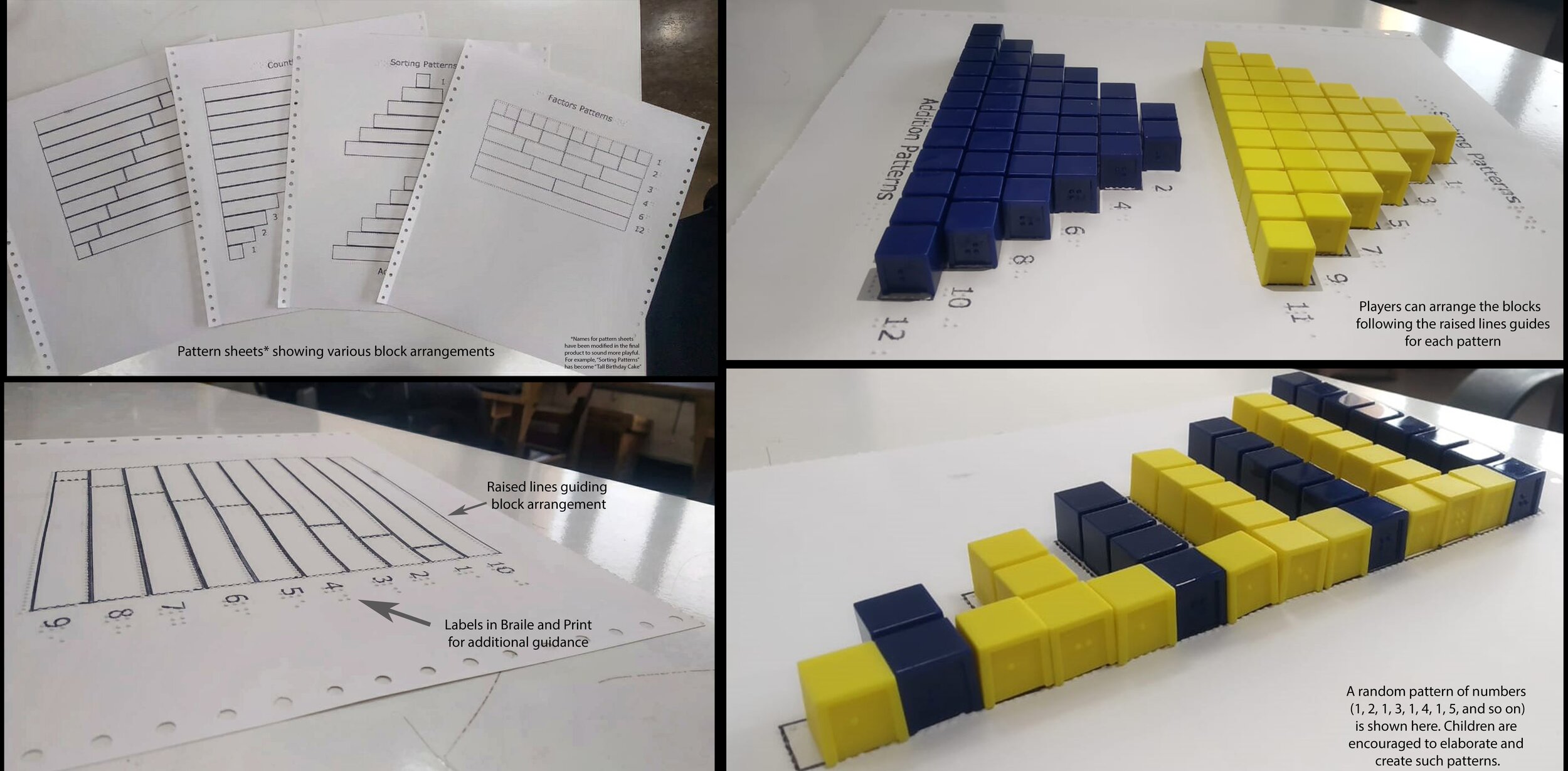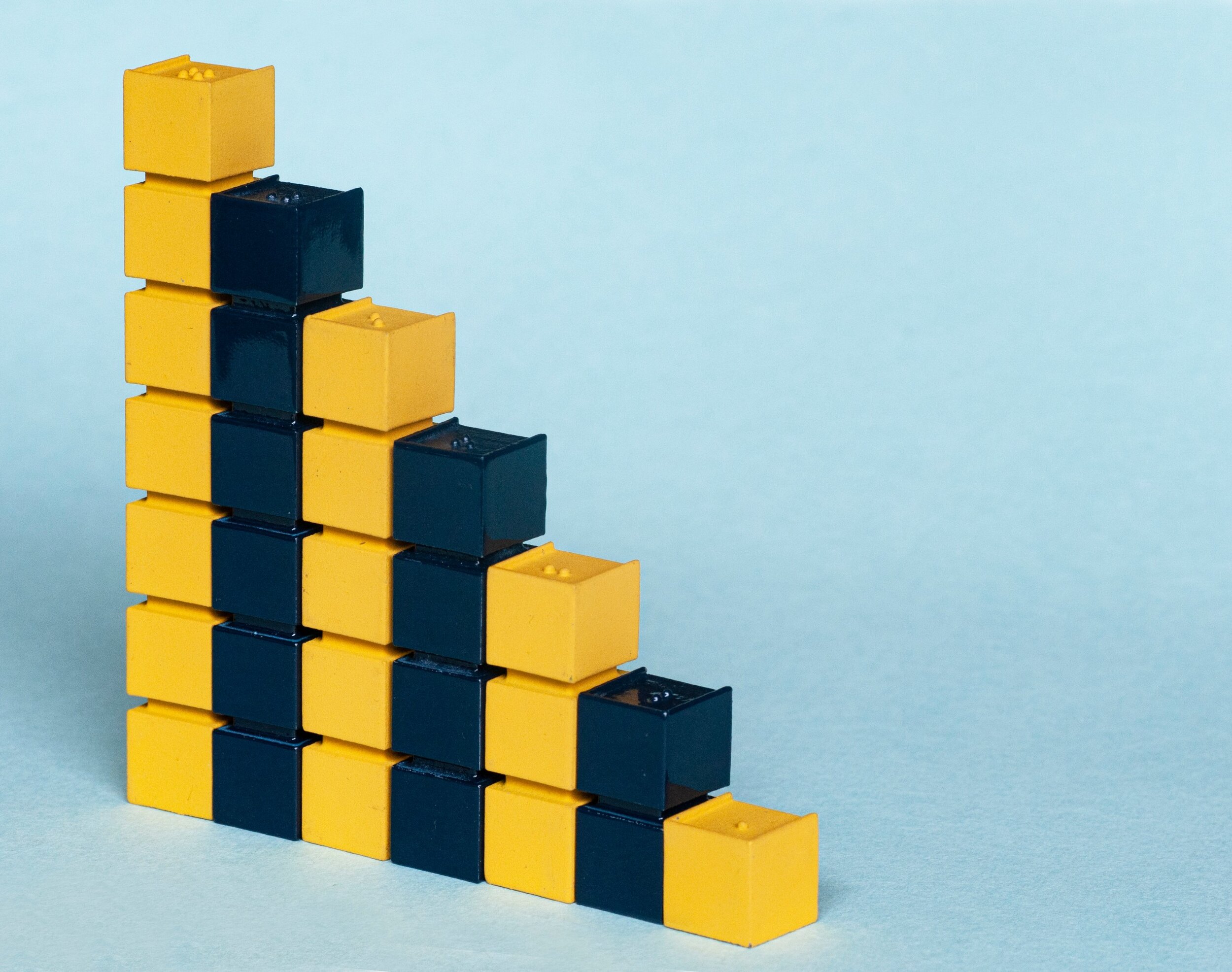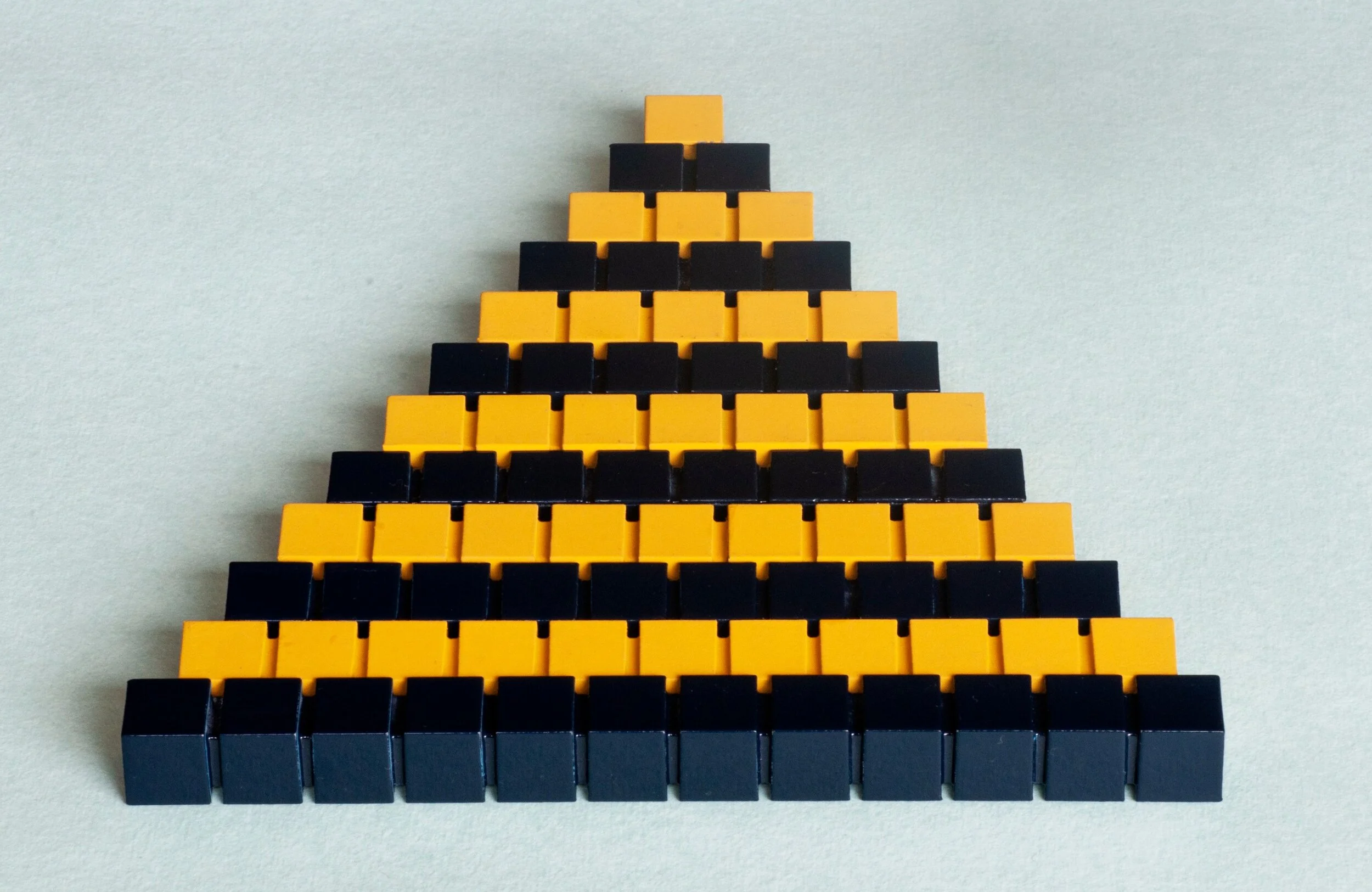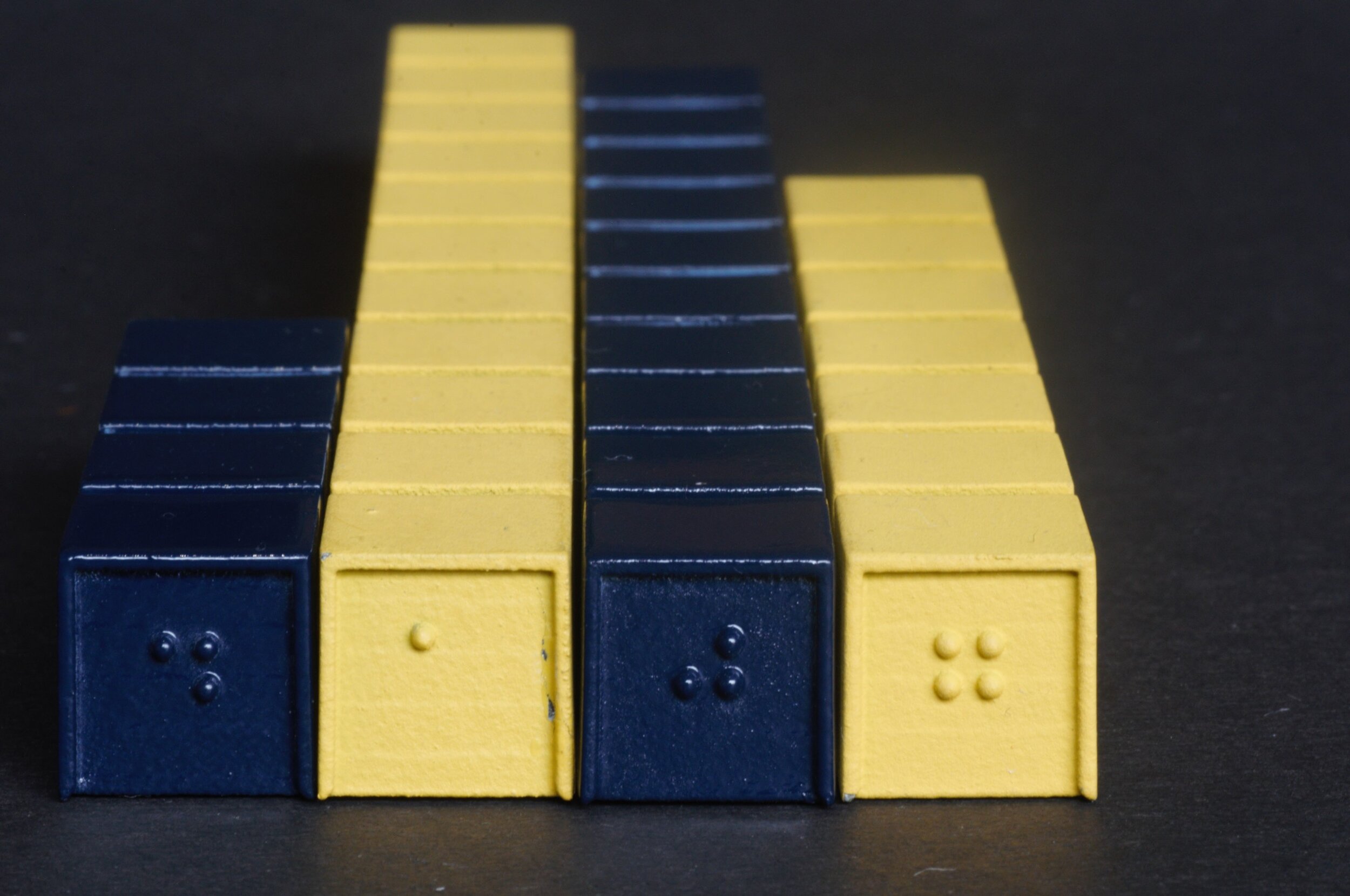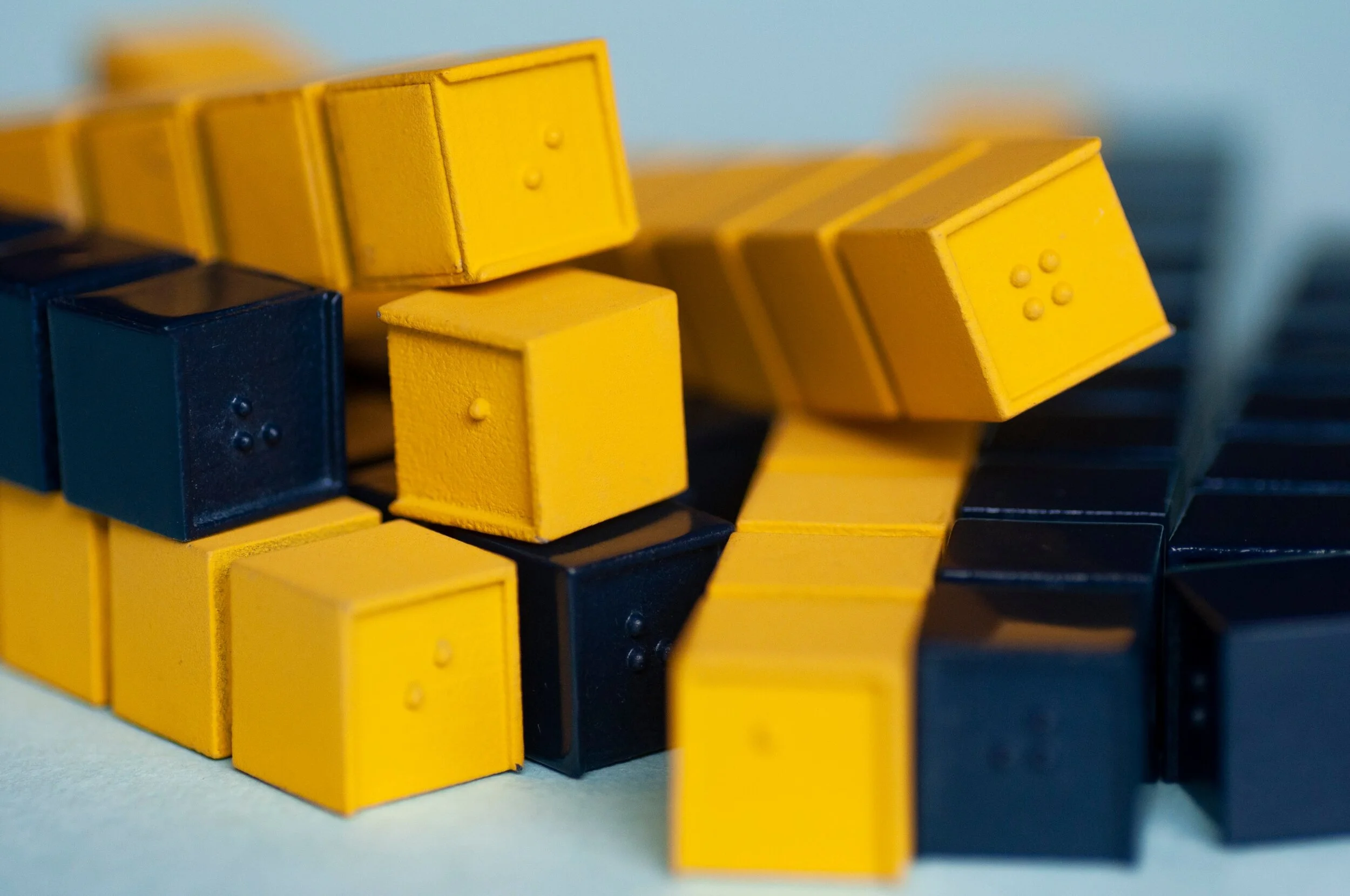Jojo Blocks
Jojo Blocks are designed for children with vision impairments (age three years and above) to gain basic understanding of numbers, counting and numeracy, while engaging in a creative playful experience with the blocks, on their own or in groups. The design is inspired by Cuisenaire rods that are used for an early introduction of children to numeracy, where each rod represents a number from one to ten and a unique color. However, these rods are inaccessible to blind children. Jojo Blocks, a product of collaboration between Microsoft Research India and Raised Lines Foundation, are designed for children with mixed visual abilities.
Jojo Blocks is a versatile collection of rectangular blocks each representing a number from one to twelve, also known as block number, where block’s length increases with the block number. The length of Unit Block is 15mm, Block Two is 30 mm, Block Three is 45 mm, and so on. Block number is written in braille on two opposite sides of the block that have recessed surfaces to prevent wear and tear of braille dots. To orient the player for reading braille, the boundary at the bottom of the recessed surfaces is left open. Additionally, for sighted and blind children who cannot read braille yet, block number can be calculated by counting the number of unit blocks in a block - a uniform tactile division created with a 1mm deep ridge along the longer sides of the block. Blocks with odd block numbers are colored
bright yellow with a rough surface finish, and blocks with even block numbers are colored dark blue with a smooth surface finish. High contrast colors and different surface texture are chosen for low-vision and blind players, respectively. Keeping the blocks hollow from the inside brought down the cost as well as the weight of the toy kit. Sharp edges of the blocks are smoothened to avoid any cuts. The design of the toy kit evolved over a period of 10 months after doing multiple design iterations and carefully incorporating feedback received from the user trials conducted with four blind individuals, out of which two taught Math at Schools for the Blind.
The toy kit comes enclosed in a well-packaged box with a lid also designed as the play arena. It consists of Block One (72 blocks), Block 2 (36), Block 3 (24), Block 4 & 5 (18 each), Block 6 (12), Block 7, 8, 9, & 10 (9 each) and Block 11 & 12 (6 each), and ten pattern sheets that demonstrate various block arrangements using raised lines with labels in braille and print. These sheets guide children in creatively replicating patterns and also teach them concepts such as, counting, addition, subtraction, multiple, division, number tables, factors, fractions, decimals, area, perimeter, data handling, etc. A play-based Math curriculum for blind children using Jojo Blocks and following a play-centered approach called Ludic Design for Accessibility is currently being designed.
